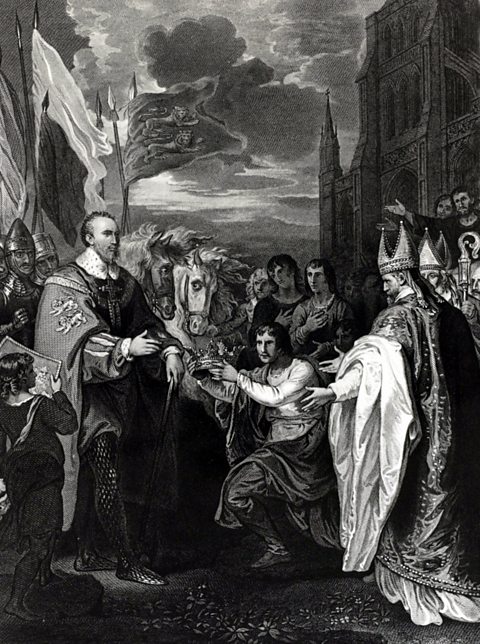The Normanisation of the English church under Archbishop Lanfranc

England had been a Christian country since Roman times, and the people who migrated and invaded England through the centuries (before the Normans) were all converted to Christianity, including the Anglo-Saxons and the Vikings. The Normans had also been Christian for a long time. When William of Normandy conquered England, he believed that it was important for the churches to come under Norman control, and for priests to take a lead in transforming the country into an Anglo-Norman territory.
Churches
Anglo-Saxon churches were usually small wooden buildings in the villages of England, and only a very few of them still survive. Even in towns, like Norwich, there were lots of small churches for small district communities, rather than large structures. The Normans wanted to show that they had an authority in religion that would match their military authority, so stone churches would be built as well as stone castles.
The Normans built larger stone churches, and constructed basilicaRoman Catholic church used for ceremonial purposes. in major towns, like London, Durham and York, which could hold hundreds of people worshipping at one time. One key feature of these large Norman basilicas was the rounded arch, and Norman churches would have been painted inside with religious art. This gave a clear message about the power of the church in peopleās lives, and the leaders of the church were usually Norman.
Lanfrancās reforms of the English Church
Lanfranc was born in Italy and had been a lawyer before becoming a Benedictine monk (monks following the strict rule of St. Benedict) in Normandy. He was the first abbotThe head of a monastery. of the Abbey at Caen in 1066.
Lanfranc was a very strict leader of the Church and introduced a lot of reforms in the English church. Two particular issues that he wanted to deal with were simonyBuying or selling leadership positions or privileges such as pardons in relation to the Church. and celibacyTo abstain (not take part in) sexual relationships..
As Williamās new Archbishop, Lanfranc achievements included:
- simony was challenged
- stricter obedience from Englandās priests to the rules of the Church
- strong loyalty to both King William and to the Pope
- substitution of most English bishops with Norman clergy
- succession of Williamās son, William Rufus, when the king died in 1087
- supremacy of the Archbishop of Canterbury over York
Lanfranc was quite successful in holding the clergy to account and made good use of the new structures of dioceses and deaneries. However, Lanfranc was always rather distant from the English people, and in 1071 he called himself a ānovice Englishmanā.
More guides on this topic
- The Normans overview - Edexcel
- Anglo-Saxon society pre-1066 - Edexcel
- Edward's death and claimants to the throne - Edexcel
- 1066 - the battles - Edexcel
- Revolt, resistance and control in Norman England - Edexcel
- Norman rule - Edexcel
- Castles in Norman England - Edexcel
- The Normans - exam preparation - Edexcel